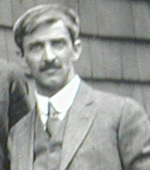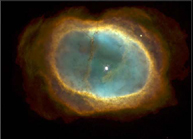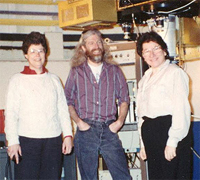The Mira variables exhibit some of the most dramatic behavior of all variable stars. For just that reason, they were among the earliest variable stars discovered and followed by astronomers trying to understand how our universe works. Four centuries after their discovery, the Mira variables remain one of the most challenging variable star classes to understand. All Miras are dying stars, soon to shed most of their mass, leaving only a white dwarf behind. To fully understand these objects, we have to understand late stellar evolution, the physics of high-amplitude pulsations and convection, mass loss and stellar winds, and all of the microphysics and chemistry that ties them all together. Individual Mira stars are themselves in transition, but they also represent another cosmic transition in progress. Because the Mira stars are in the stage of their evolution during which most of their mass is returned to the galaxy through stellar winds and mass loss, they are a key mechanism for cosmic chemical enrichment for new generations of stars. Our understanding of how our galaxy and the larger universe are evolving depends in part upon the study of Mira variables.
 |
| Visual magnitude estimates (25-day averages) of RU Virginis from the AAVSO International Database. |
No two light curves look alike; Mira light curves are like snowflakes. And a few Miras have truly remarkable light curves, with lots of interesting things going on at the same time. This quarter brings into view one of these curious Miras -- RU Virginis. RU Vir is one of many Miras in the AAVSO observing program whose light curve has hit the century mark, and more (and more varied) observations continue to be made. RU Vir has shown some perplexing behavior ever since its discovery, and this behavior may help to shed light on some fundamental physics of stars at the ends of their lives. This makes RU Virginis a deserving target of our Variable Star of the Season series.
A short history of RU Virginis
The recorded history of RU Vir dates to the late 19th Century, and the cartographic work then being done at the Dudley Observatory in Albany, New York. At the time, Dudley was under the directorship of Lewis Boss, compiler of the Preliminary General Catalogue of 6188 stars -- the first Boss Catalog -- and also the uncle of the AAVSO PEP pioneer Lewis J. Boss. The Boss catalogue was meant to be a more accurate and complete astrometric and proper motion survey than had been done before. Proper motion surveys require multiple observations of the same regions of sky many years apart, and so it's no surprise that such a survey might uncover some long period variable stars.
 |
| Leon Campbell with the AAVSO at HCO, 1915. |
In 1897, Arthur J. Roy, a staff astronomer of the Dudley Observatory, published a note on a star in Virgo found during observations for the Boss Catalogue that did not appear in the Bonner Durchmusterung published half a century earlier. Roy gave several magnitude estimates made between May 1895 and March 1897, and also noted that it was a very red star. Although he gave no suggestion as to the type of variable, a light curve of Roy's magnitude estimates could easily match that of a Mira. After Roy's discovery, several observers -- including early amateur observers Seth Chandler Jr. and Henry Parkhurst -- began recording the light curve of RU Vir, and it entered the AAVSO's published light curves with Leon Campbell's first observations in 1904, published in Harvard Annals.
The light curve of RU Vir began to show curious behavior almost immediately with a pronounced declining trend in average magnitude. Later photometric studies confirmed and clarified the red spectral type of this object, and by 1940 it was a known carbon star -- a star with pronounced spectral absorption features of carbon. By the end of the 20th Century, the long-term light variations of RU Vir proved to be cyclical, and the natures of this star and similar stars were under intense scrutiny by the astronomical community. RU Vir and asymptotic giant branch (AGB) stars like it remain an interesting astrophysical puzzle, and theoretical studies of these stars continue.
What are carbon stars?
Stars start their lives as mixtures of whatever elements are present in the nebulae from which they form. At the current epoch of the universe, newborn stars are composed of hydrogen (70% by mass) and helium (about 28%), with just a small fraction of "metals" (meaning everything else). Stars are powered by thermonuclear burning of simpler elements into heavier ones. As normal, low-mass stars age, their hydrogen-rich cores are slowly converted into helium. When their hydrogen fuel runs out they become red giants, with a helium core surrounded by a hydrogen-burning shell. Then, as the star progresses through the evolutionary stages between the red giant branch and the end stage of their lives (when they become white dwarf stars), they undergo several episodes of nuclear burning both in their cores and in the hydrogen and helium-rich shells surrounding the core. When these events are particularly energetic, nuclear-processed material down in the core can be dredged up and mixed with material in the inner parts of the stellar envelope. Since red giants and AGB stars have fully convective envelopes (where heat is transported mechanically by hot gas rising upwards against gravity), some of this processed material can reach the surface of the star, where it becomes visible in the star's spectrum.
One well-known example of this phenomenon is the presence of the element technetium in the spectra of some AGB stars. Technetium has such a short half-life (only a few million years) that it must be freshly made as a byproduct of nuclear burning that occurs deep in the core. The atmospheres of AGB stars also become enriched in "s-process" elements -- heavy elements (like zirconium) that form preferentially through slow neutron capture deep in the star where other nuclear reactions occur -- in exactly the same way. Carbon stars are another manifestion of this process. For stars having masses between 1.5 and 5 solar masses, it is thought that the "dredge-up" events that occur on the AGB can mix some of the carbon deep inside the star into the envelope, creating a "carbon star". Carbon and its various compounds have very strong absorption in the optical, and give carbon stars their distinctive reddish color.
Mass loss on the AGB
 |
| A carbon dust-rich planetary nebula, NGC 3132. RU VIR and other C-type AGB stars will end up like this in the not-too-distant future. Image credit: The Hubble Heritage Team (STScI/AURA/NASA). |
Since the AGB stars soon begin to return some of their mass to interstellar space, the study of carbon stars and other AGB stars is crucially important in understanding the chemical enrichment of the interstellar medium. In fact, most of the atoms that make up you were forged inside an AGB star billions of years ago before the birth of our solar system, so the physics of AGB stars is hardly an esoteric question. But the incredible complexity of the problem -- everything from the chemistry of dust grains to the acoustic behavior of extended stellar envelopes has to be taken into account -- means we still have a long way to go before we fully understand these objects.
One key question is why exactly are they losing mass? Former AAVSO President Lee Anne Willson and collaborators have been working on this problem for many years. We do know that Mira variables seem to be preferentially located at the point where these stars lose the most mass; not only are they pulsating strongly, they're also blowing themselves apart! Is there a causal connection between the two? Are Mira pulsations somehow responsible for mass loss, or do they facilitate it in some way? Or do both happen coincidentally? One of the ways to study the problem is to perform computer simulations of Mira star atmospheres, and see how they respond to large-amplitude pulsations. Prior work by Willson's collaborator George Bowen (Iowa State University) showed that Mira pulsations can indeed drive mass loss; strong shocks can form in the atmosphere when the star's pulsation period is very long. Contrary to the current paradigm that mass loss is caused by radiation pressure on dust, Bowen found strong mass loss just from pulsation. Perhaps long period Miras (like RU Vir and other carbon Miras) might preferentially lose mass in this way. Willson is currently collaborating with several astrophysicists world-wide to study the problem in greater depth.
Multiwavelength observations of RU Vir
One way to study the circumstellar environment of RU Vir and other AGB stars is to look in many different wavelengths of light. Like all AGB stars, RU Vir is a very bright infrared source; RU Vir is 12 magnitudes brighter at minimum in the near-infrared K band than in V! The invention of infrared-capable telescopes and satellites improved our understanding of these stars immensely. On the ground, near-infrared observations of Miras have been ongoing for decades (such as the extensive observational work performed by astronomers at the South African Astrophysical Observatory). In space, the IRAS and (most importantly) ISO satellites vastly expanded the wavelength range available for study, letting us probe the mid-infrared wavelengths where many of the spectral features of dust and important molecules lie. Microwave and radio telescopes have also revealed much about the circumstellar material around these Miras and other AGB stars, including the discovery of masers and molecular shells. Observations in the long-wavelength end of the spectrum have been key in revealing the chemistry, circumstellar environment, and mass losing behavior of AGB stars.
 |
| Priscilla Benson (left), Steve Howell (center), and Janet Mattei (right) obtaining calibrations of RU Vir and other Hipparcos red variables at the KPNO 1.5-meter telescope, 1993. |
The AAVSO, too, has contributed to the multiwavelength study of RU Vir, but for a different reason. As part of its survey, the Hipparcos satellite obtained photometry on many tens of thousands of stars. The AAVSO joined in this study, and the collaboration between AAVSO Director Janet Mattei, and Marie-Odile Mennessier and other Hipparcos scientists proved a fruitful one. However, it was clear that the Hipparcos light curves of extremely red variables -- like RU Vir -- weren't properly calibrated with Hipparcos' camera. Thus a new project developed around the study of these red variables, resulting in the AAVSO's first organized foray into multicolor CCD photometry -- the AAVSO BVRI observing program. Former AAVSO Director Janet Mattei collaborated with Steve Howell (NOAO) and Priscilla Benson (Wellesley) to obtain BVRI-calibrated standard stars at Kitt Peak National Observatory for several of these red variables, and the AAVSO CCD community responded with BVRI CCD photometry for many red stars that continue to the present.
RU Vir and friends...
RU Vir has been well-observed by variable star observers world-wide since its discovery, and the AAVSO light curve clearly shows the complex behavior of this long period Mira. The Mira-like behavior of RU Vir is reasonably well-understood; it has a pulsation period just over 430 days, putting it in the class of long period Miras, and the full light amplitude of the pulsation is between three and four magnitudes. But what is striking about the light curve is the very long-term, large-amplitude modulation in mean light. The variations appear to be cyclical, with a period between eight and ten thousand days -- even the century of data we do have isn't quite enough to prove a period like that with certainty -- and an amplitude of two magnitudes. Even more striking is the fact that the Mira-like variations seem to ignore the change in mean light; it's as if the two operate independently of one another. That's a strong hint that the modulation is occuring outside of the star, rather than in the star itself where the pulsational variations occur. The best explanation seems to be a modulation in the dust opacity around the star. If a shroud of dust surrounding RU Vir gets thicker or thinner we would see the star get brighter or fainter without seeing much of a change in RU Vir's other behavior. RU Vir isn't the only Mira variable to do this; in fact, it seems to be the rule rather than the exception for the long period carbon stars, as Percy et al. noted. T. Lloyd-Evans (1997) describes the occasional fadings of several well-known Miras, including V Hya, R Lep, R For, and W Aql; he also shows a remarkable plot showing the visual lightcurves of V Hya and R Lep with the flux density of C2 (diatomic carbon), showing the visual fadings occur at the same time that the infrared emission from C2 is increasing -- a "smoking gun" indeed for the causes of the fadings!
 |
| Visual magnitude estimates (25-day averages) of V Hydrae from the AAVSO International Database. |
However, lots of questions remain about RU Vir, the Mira variables, and AGB stars in general. Why do they lose mass so quickly? How are pulsations involved? What other processes impact the evolution of Miras and other AGB stars? As always, observational data has a role to play. The pulsational variability of Mira stars and the pecular behavior exhibited by RU Vir and other carbon stars like it will always be factored into any theoretical model of AGB stars. And that, of course, is where the observer comes in. Our understanding of AGB stars wouldn't be as advanced as it is today without the work of the observational community over the past century. Continued observations of Mira stars like RU Vir and the other carbon stars will help clarify the physical picture we have of these stars, and the more and better data we have, the better our understanding will eventually be.
Observing RU Vir
 |
| A Digital Sky Survey (DSS-2) image of the RU Vir field. The face-on barred spiral NGC 4688 lies about 15 arcminutes northeast of RU Vir. |
RU Virginis (designation 1242+04, RA 12:47:18.4, Dec +04:08:41, J2000) is easily visible to both Northern and Southern hemisphere observers. The AAVSO has a BVRI Chart for RU Vir in addition to visual charts. RU Vir is currently approaching its bright phase, and it now varies between 9th and 13th magnitude over the course of its cycle. Like all carbon stars, it is much brighter in the red, and so it may appear brighter than it actually is to the eye. Be sure to observe it with a "quick glance" as is recommended in the AAVSO Visual Observing Manual. And as with all long-period variables, observations should be made about once every ten days. Visual estimates and instrumental photometry all provide important information for astrophysicists studying AGB stars, and RU Vir's long-term visual light curve is one of AAVSO's finest.
As an additional deep-sky treat, RU Vir lies in a galaxy-rich portion of the sky. The best of these is the lovely face-on barred spiral NGC 4688, about 15 arcminutes NE of RU Vir. Those of you with CCD cameras who image RU Vir at minimum light may also pick up a number of background galaxies within just a few arcminutes of RU Vir -- a good reason in and of itself to save your frames! Visual observers with larger aperture telescopes should easily be able to enjoy NGC 4688.
As I mentioned, there are a number of objects very similar to RU Vir, so it is by no means unique in being a worthwhile target of study. V Hya is a fine example of a semiregular variable with deep fadings, also visible during this season. W Aql and R Lep are two Miras like RU Vir, visible in the evenings closer to the end of the season. All of the variables in the BVRI observing program make fine targets -- regardless of whether you're a CCD or visual observer.
Clear skies, and good observing!
This season's Variable Star Article was prepared by Dr. Matthew Templeton, AAVSO.
For further reading
- AAVSO charts for RU Vir
- The AAVSO Manual for Visual Observing of Variable Stars
- The 2004 AAVSO Symposium on Mira Companions & Planets. See especially Lee Anne Willson's powerpoint presentation from her earlier colloquium at the Harvard-Smithsonian Center for Astrophysics.
- Hoefner, S., 2007, "Headwind: Modelling Mass Loss of AGB Stars, Against All Odds", in Why Galaxies Care About AGB Stars, F. Kerschbaum, C. Charbonnel, and R. Wing, eds., ASP Conference Series, in press
- Howell, S.B. et al., 1993, "Calibration of Hipparcos Long Period Variable Star Fields Using Multi-Color CCD Observations", JAAVSO 22, 2
- Lloyd-Evans, T., 1997, " Spectroscopic changes and the variable mean light of carbon stars", MNRAS 286, 839
- Percy, J.R., et al., 1990, " Long-term changes in Mira variables", in Confrontation between stellar pulsation and evolution, ASP Conference Series 11, 446
- Percy, J.R. and Bagby, D.H., 1999, "Long-Term Changes in Mira Stars. III. Multiperiodicity in Mira Stars", PASP 111, 203
- Whitelock, P., 2000, " Infrared Light Curves of Carbon-Rich Variables", in The Carbon Star Phenomenon: Proceedings of the 177th Symposium of the IAU R.F. Wing, ed. (Dordrecht: Kluwer Academic)
- Willson, L.A., 2000, " Mass Loss From Cool Stars: Impact on the Evolution of Stars and Stellar Populations", Annual Reviews of Astronomy and Astrophysics, 38, 573

